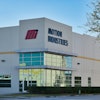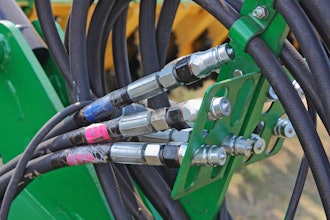There are different reasons for building or expanding a warehouse that can include meeting growing business needs, penetrating new markets, avoiding bottlenecks and replacing old and soon-to-be obsolete equipment. Here are 10 best practices for how to go about creating or expanding a warehouse.
1. Get the numbers you need to justify the project. The feasibility of major upgrades depend on the right numbers and any budget should be framed by the IRR. Manufacturers should see if it’s possible to get a positive return even with conservative numbers that can stomach anything from surprises to fires. Considerations to the IRR include location, ownership, equipment, construction, and lifespan.
2. Give yourself enough time. Projects always take longer than expected and being honest about the process will prevent surprises down the road. To do it right takes time. Don’t rush into deciding equipment vendors, or forget to factor in a learning curve for any new processes or equipment. Sometimes the learning curve of working with new equipment can be longer than anticipated.
3. Decide to Renovate or Build (And, Remember, Location, Location, Location). Deciding whether to renovate or build is always a difficult decision and it’s important to take a longer view on budget. Sometimes renovating an existing location may not be in your best interest even if the cost is lower in the short term. As with most real estate deals, the decision usually comes down to “location, location, location.” Asking the following questions can help make the decision easier:
- Where do we want to be for employees, suppliers, and customers?
- Where is the best access to the interstate?
- What’s the cost of putting in rail?
- Where can I build to get the best tax rate?
Choose a location that maximizes the answers to each of these questions and delivers the highest IRR.
4. Think about square footage and maximizing space. The first thing you need to look at is the cost of square footage. For industrial locations, it is usually $85 per square foot. And the first question is, how can you maximize each square foot? Any square foot that’s empty puts you and your customer at a disadvantage. The next question is how fast can I move inventory through the building. A rule of thumb is to make policies of turning over finished goods in no more than two weeks and not holding inventory for more than 90 days.
5. Involve every stakeholder. Involve every stakeholder from inside and outside the company to prevent any fires that could burn your budget. At the end of the design period, there should be consensus that stops major issues like incorrect equipment layout from happening. When there isn’t buy-in, you have a guarantee that there will be problems. That includes contacting city officials about your plans. Approach the city early and discuss the number of jobs that would be created. This action enables you to turn around permits much faster.
6. Get outside help. The biggest thing to remember is that managing these projects is a full-time job and most people already have full-time jobs. So, hire a dedicated project management team or person to help you. Some people will be the expert on design and construction side; some people have connections with city officials. Utilize a product management team, even if that team is the property manager that leases the building.
7. Mobilize the team. Investments on this scale are much more doable when you have a team you can trust. It is one thing to have new equipment, but it is the team that truly makes the difference. It comes down to developing a good work culture that fosters entrepreneurialism, smart decision making, and learning on the job.
8. Take your time with the latest technology. When it comes to selecting the right equipment timing matters. What’s available one year will be different the next, and there are several factors to consider, including automation possibilities, installation and process time, and lean manufacturing best practices..”
9. Vet the contractors. It is important not to go with established vendors to save time or money. The added benefit can be some new contractors have the motivation to do a good job so they would have opportunities for other equipment or building expansions. It is an opportunity for them and, in the meantime, your company receives the best value, technology, and capability.
10. Don’t Forget Your Existing Customers. When building in a new location, it’s important to think about your current customer base so you don’t lose a single one in the process. Focus on communicating very early and accurately. Outsourcing to other locations or partner processing companies will help you avoid losing any customers.
Whether you renovate or build, an efficient, modern warehouse is a massive investment that when done right is usually worth it. Do it smart and you will protect your budget while guaranteeing the IRR. There will always be situations that will happen outside of your control, and you have to factor those unforeseen situations into the time table and budget. Ultimately what’s most important is that you provide a return on investment. It always has to be centered around investment, and keeping the budget under control.
Joey Johnson is currently the Executive Vice President – South Region for Kloeckner Metals. Johnson started in the metals industry right out of college for Edgcomb Metals Company in 1994 as an Inside Sales Representative. Previous experience includes the following: Sales Management, Product Management, Purchasing & Quality Management, and General Manager.






















